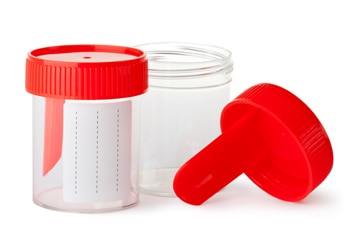Diagnosis of Bladder Control Problems & Bedwetting in Children
How do doctors diagnose bladder control problems in children?
To diagnose a bladder control problem, doctors use a child’s
- medical history
- physical exam
- lab tests
- imaging tests, if needed
In addition, doctors will ask questions about
- symptoms
- when and how often the wetting happens
- dry periods
- family history of bedwetting
Bladder and liquids diary
Before an office visit, it’s helpful to use a bladder diary (PDF, 487 KB) to keep track your child’s bathroom habits and how much liquid your child drinks. Write down when your child uses the toilet, the amount of urine passed, and when your child leaks urine. Record the timing and amount of liquid your child drinks, too, including whether your child drinks fluids before bedtime.
Because constipation can cause wetting or make it worse, your child’s doctor may ask you to record how often your child passes stool and whether it’s hard or soft.
What tests do doctors use to diagnose bladder control problems in children?
Lab tests
Health care professionals often test a urine sample, which is called urinalysis, to help diagnose bladder control problems in children. The lab may also perform a urine culture, if requested. White blood cells and bacteria in the urine can be signs of a urinary tract infection.

Other tests
In a few cases, health care professionals may order imaging tests or tests of how the urinary tract works. These tests can show a birth defect or a blockage in the urinary tract that may lead to wetting. Special tests can find nerve or spine problems. Testing can also help show a small bladder, weak muscles, or muscles that don’t work together well.
Ultrasound. An ultrasound uses sound waves to look at structures inside the body without exposing your child to radiation. During this painless test, your child lies on a padded table. A technician gently moves a wand called a transducer over your child’s belly and back. No anesthesia is needed.
Voiding cystourethrogram (VCUG). A voiding cystourethrogram uses x-rays of the bladder and urethra to show how urine flows. A technician uses a catheter to fill your child’s bladder with a special dye. The technician then takes x-rays before, during and after your child urinates. A VCUG uses only a small amount of radiation. Anesthesia is not needed, but the doctor may offer your child a calming medicine, called a sedative.
MRI. Magnetic resonance imaging (MRI) uses magnets and radio waves to make pictures of the urinary tract and spine. During this test, your child lies on a table inside a tunnel-like machine. MRI scans do not expose your child to radiation. No anesthesia is needed, but the doctor may offer your child a calming medicine or suggest watching a children’s program during the test.
Urodynamic testing. Urodynamic testing is a group of tests that look at how well the bladder, sphincters, and urethra are storing and releasing urine. These studies are not used often, but they may be helpful when simple bladder management methods are not as successful as expected.
This content is provided as a service of the National Institute of Diabetes and Digestive and Kidney Diseases
(NIDDK), part of the National Institutes of Health. NIDDK translates and disseminates research findings to increase knowledge and understanding about health and disease among patients, health professionals, and the public. Content produced by NIDDK is carefully reviewed by NIDDK scientists and other experts.
The NIDDK would like to thank:
Stephan A. Zderic, MD, Children’s Hospital of Philadelphia

